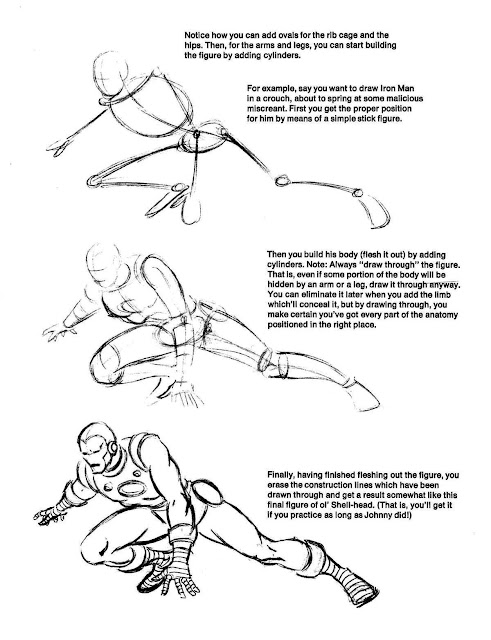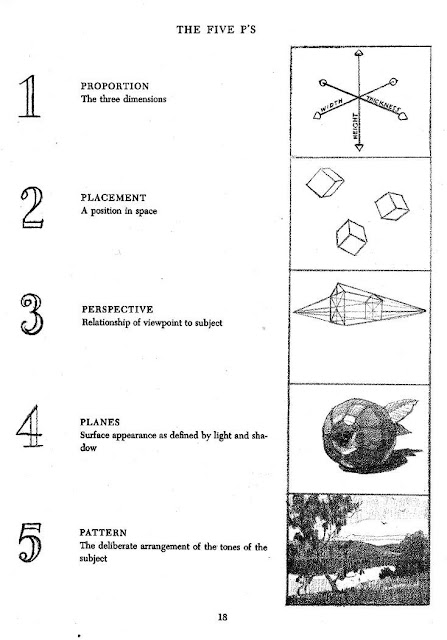Shoutout Sunday: Amadhia (formerly Timothy) Albee
Amadhia Albee, formerly known as Timothy Albee, is also one of my earliest influences, like M dot StrangE and Terrence Walker.
I can't recall how Albee entered my radar but I'm glad she did. When I learned of her self-made, 22 minute film, Kaze, Ghost Warrior, I immediately bought both the DVD and the book that explains its creation. I especially like how then-Timothy's name appears exclusively in ALL of the credits of the film except for executive producer, the only credit she shares with others.
Albee left her studio job, moved to Alaska and, in the company of her sled-dogs, created this film in six months using two computers. Now that's some hardcore DIY!
Albee then released a book, CGI Filmmaking: The Creation of Ghost Warrior, detailing how she made the film. It's definitely worth the read. The book contains the complete script and final shot list, production and location stills and a thorough explanation of the film's entire creative process. While thumbing through the book as I typed this post, I realized it would be helpful for me to re-read it since I'm deep in the production process of my own film.
I recommend that DIY animators watch Albee's film and read her book. Despite it being published in 2004, the overwhelming majority of the information isn't dated. Albee talks about filmmaking principles that will always be relevant.
Shoutout Sunday: M dot Strange
M dot Strange is undoubtedly one of my biggest influences. No one defines DIY better than Strange. Plus he doesn't own a car and rides a bike so what's not to like?
M dot's current work includes the animated feature film I AM NIGHTMARE, the comedy series BADASSERY and music videos for the bands Rabbit Junk and Mindless Self Indulgence.
If you're an indie artist of any kind, Strange is someone with whom you should get acquainted. I'm confident that he'll inspire you as much as he's inspired me.
The Seven Sure Fire Ways for an Artist to Stay Broke
Courtesy of DrawnbySuccess.
Seven Ways to Stay Broke as an Artist.
- Lie
- Complain
- Prophecize
- Whine
- Settle
- Regret
- Stop/Give up
- (and Bob adds one more )—Procrastination.
Yep, that pretty much sums it up!
Lack of posts means…another scene completed!
Here's a screenshot from Sc. 29.
I'm now 39% done with the film's animation. I also recently recorded the voice actors (who were awesome!) so I can animate the remainder of the film to their voices.
Starting the next scene today!
I'm now 39% done with the film's animation. I also recently recorded the voice actors (who were awesome!) so I can animate the remainder of the film to their voices.
Starting the next scene today!
Stick Figures and Mannikins
Gesture has a sister and her name is stick figure/mannikin!
The examples of gesture from this post include aspects of the stick figure/mannikin. They're actually inseparable elements.
Here are some sources from which I learned the stick figure/mannikin:
1. How to Draw Comics the Marvel Way—Stan Lee & John Buscema:

2. Figure Drawing for All It's Worth—Andrew Loomis:
The examples of gesture from this post include aspects of the stick figure/mannikin. They're actually inseparable elements.
Here are some sources from which I learned the stick figure/mannikin:
1. How to Draw Comics the Marvel Way—Stan Lee & John Buscema:

2. Figure Drawing for All It's Worth—Andrew Loomis:
3. Famous Artists Course:
4. Peter Cox (painter and Arts Students League instructor):
I took Cox's artistic anatomy/figure drawing class in the '90s and learned a lot. One of his methods that I especially liked involved getting the figure down quickly by concentrating on drawing its "major masses." There are only three parts of the skeleton that are solid and inflexible—the skull, the ribcage and the pelvis. Cox taught us to get those three parts down first during the short poses section of the class. The remainder of the skeleton flows from those three parts. I still use this method today when doing gesture drawings. The red lines in the gesture drawing below show where I placed the lines of action (I always start a figure drawing with a line of action) and the major masses before building volumes and clothing on top:
Kill Your Fear, Be Successful
Afraid of being laughed at?
Afraid of making a mistake?
Afraid of failing?
Afraid of succeeding?
Afraid of being uncomfortable?
There can be ZERO success until we kill all of these fears. Every self-improvement book I've read, published from the turn of the last century to the turn of this century, has hammered home this one major point: you must kill your fear if you are to have any success in life.
Don't get confused. As Arnold Schwarzenegger said in a graduation speech, take risks but don't be reckless.
The following two blogs discuss variations of the same theme.
Addicted2Success says don't play it safe.
zenhabits says get out of your comfort zone.
We artists need to listen to this advice, then live it.
Shoutout Sunday: Terrence Walker
Terrence Walker holds the top spot of influence in my development as a DIY filmmaker. His work was made me realize for the first time that being an indie animator was possible. I devoured his first blog and continued reading his successive blogs, fascinated by his travels from California to live and work in the Philippines, Shanghai, Japan, Korea and Hong Kong. Rarely are Americans fearless enough to leave this country to pursue their artistic dreams abroad but that's exactly what Walker did.
Walker's bio from his Studio ArtFX website:
Terrence Walker is a published manga artist and animator having written the global manga World of Hartz for TOKYOPOP and responsible for the independent animated short films Shadowskin and Understansing Chaos, which changed the indie animation world forever. He also worked as a 3D digital artist, in Hollywood, for studios such as Sony, Warner Bros. and NBC/Universal on multiple television and feature film products.
 |
| Terrence Walker |
I own several of his DVD's—the short films "Understanding Chaos" and "Shadowskin" and his making-of DVD "Anime: Concept to Reality" which contains the two aforementioned films—fascinated by his process and can-do attitude. Walker also sells (often at discounted prices) in-depth tutorials covering a wide range of topics, some of which I've also bought. Walker gives the buyer a lot of content for their money.
Back in April, he was interviewed for a podcast by another successful DIY animator, M dot Strange (the topic of next week's shoutout.) It was a treat listening to two guys who've drudged through the muck of indie filmmaking talk about their experiences.
Terrence Walker has given up a lot of his time to share his expertise and experience with people like me and to create useful content. His insights have been invaluable. It's because of guys like him freely sharing so much that they've not only saved me time and frustration but have inspired me to keep pushing.
Thanks, Terrence!
Luis Escobar's Draw Fu
In my constant search for distilled drawing knowledge, I stumbled upon Luis Escobar's The Drawing Website and blog. Combining his martial arts studies with his vast drawing experience that includes storyboarding The Simpsons, Escobar makes a point that's worth repeating often: drawing is a skill that can be taught and learned. His drawing instructions are clearly presented in easy-to-digest portions.
For those of us struggling to improve and in need of some beginner basics, I recommend subscribing to Escobar's emails at his website and getting his free ebook "The Art of Draw Fu Beginner Level."
THE Secret
I don't know what Rhonda Byrnes's "The Secret" is exactly but it appears that she's collected centuries of wisdom from various sources and combined it into an accessible system. I can't speak to the value of "The Secret" book or movie but I do know that I've come across what I consider to be The Secret. Here it is for free:
Control Your Thinking, Control Your Life.
THAT is the secret to human existence. I came across this "secret" while reading Charles F. Haanel's "The Master Key System." Published in 1916, this book tells you the secret on page two instead of dragging out the mystery for 200 pages.
The secret is that every human being has the ability to create what he or she wants through their thinking.
It's that simple yet incredibly hard to execute.
I highly recommend that you read "The Master Key System" and read this post from the Addicted2Success website.
Get Sh$t Done
 |
| Image courtesy of ForbiddenPlanet.com. |
Struggling to get stuff done? Read these tips from the prolific Joss Whedon.
Austin Kleon's Book Creation Process
 |
| Image courtesy of Austin Kleon at austinkleon.com. |
Austin Kleon is definitely one of the few blogging artists that I think every DIY creator needs to follow. His advice is succinct, accurate and realistic.
His "Steal Like an Artist" was manna for my creative soul and now he's working on a new book, "Show Your Work!." I can tell I'm going to love it just based on the title and some screenshots of his writing process that he shared on his blog here. I love seeing his creative process!
How important is Kleon to me and my work? By simply reading the first item on his list above, "Think process, not product," I've relieved myself of the huge self-inflicted pressure to complete this film quickly. Kleon validated for me that rushing through the creation of my film is not the goal. The goal is to learn from the process of making the film so I can apply that knowledge to future projects.
I'll be talking more about Kleon in an upcoming Shoutout Sunday post.
Figure Drawing Step One: Gesture
Studying figure drawing involves learning, as Glenn Vilppu says, "tools not rules."
The first tool is gesture. Here are some excellent explanations of what gesture is and how one should approach it:
Stan Prokopenko
Glenn Vilppu's Drawing Manual
Some of my daily gesture drawings done from photographs of active poses:
The first tool is gesture. Here are some excellent explanations of what gesture is and how one should approach it:
Stan Prokopenko
Glenn Vilppu's Drawing Manual
Some of my daily gesture drawings done from photographs of active poses:
Gag Cartoon
Wouldn't it be great to get a gag cartoon selected for publication in The New Yorker?
I used to think that until I researched how that actually works. Since I'm not interested in waiting months or years to be chosen, I'll just put my cartoons up here.
Here's my first. The gag is VERY dated and not original. BUT the point of this exercise is just that: to exercise my drawing skills, cartooning skills and gag skills while creating a body of work.
And that's why we do what we do, isn't it? To create our own bodies of work.
I used to think that until I researched how that actually works. Since I'm not interested in waiting months or years to be chosen, I'll just put my cartoons up here.
Here's my first. The gag is VERY dated and not original. BUT the point of this exercise is just that: to exercise my drawing skills, cartooning skills and gag skills while creating a body of work.
And that's why we do what we do, isn't it? To create our own bodies of work.
Shoutout Sunday: Leo Babauta
I recently realized that I owe so much of my new, healthier, more productive mindset and habits to a variety of people. I think it's time to start saying "thank you" to those individuals and to share their wisdom with you.
This post starts a new series called Shoutout Sundays that will highlight the people, ideas and books that have been essential to my spiritual growth and creative comfort.
I'll start with Leo Babauta, writer of the blog zenhabits.net. Babauta's website is a terrific source of guidance for improving and simplifying one's life.
And in his new book, "The Little Book of Contentment," he nails it.
Discontent, fear, jealousy, self-dislike, judgment—all of the things prevent us from being content also prevent us from being creative and experiencing the success of which we dream. Babauta analyzes all of those feelings—simply and straightforwardly—and forces you to acknowledge your own self-sabotage. Self-sabotage, also known as The Resistance, is especially abundant in creative people and recognizing it's symptoms is the first step in fighting it.
Read Babauta's site, download this free book (I liked the Contentment book so much I just purchased his "Zen to Done" book for $9.50. I was happy to buy this one since I found the Contentment book so helpful) and most importantly, take ACTION!
I'm confident it will improve your productivity, your feelings about yourself and your attitude towards your work.
Andrew Loomis's 5 C's
Continuing with lessons from Andrew Loomis's "Successful Drawing," here are the 5 C's to consider when drawing:
1. Conception—before beginning to draw, close your eyes and see what you want to draw. Thumbnail what you see.
2. Construction—gather your thumbnails, sketches and reference material. Establish the volume, bulk, mass of your object(s). Determine your drawing's point of view and perspective.
3. Contour—the outer edges of your forms.
4. Character—the quality that distinguishes one thing from another. Uniqueness. Loomis: "Real presentation of character lifts the artist to the top of his profession."
5. Consistency—the truth as recognized by a viewer's intelligent perception. Also, it's the handling of all of the drawing elements. Harmony. Unity.
Andrew Loomis's Five P's
According to Loomis in "Successful Drawing," the appeal of a drawing involves several factors. Among those factors are The Five P's.
Loomis believes that a drawing's appeal for a viewer is encompassed in "intelligent perception," vision coordinated with the brain. The human brain simply knows when it's looking at something that works and is attracted to it while being repulsed by that which doesn't work (the uncanny valley.) It's important for artists to be aware of the viewer's intelligent perception to ensure that our work gets the intended response. These are a few basic elements to a good drawing and those elements can be learned.
Let's start with The Five P's:
1. Proportion—every object has height, width and depth. The ratio among these three dimensions is proportion. When the ratios are correct, the drawing looks good.
2. Placement—the positioning of the object within the boundaries of the drawing area.
3. Perspective—the object's relationship to the eye level/horizon. No object can be drawn without perspective.
4. Planes—in order to correctly show an object's light, halftone and shadow, the object must be divided into planes. The effect of light on planes makes a form appear solid.
5. Pattern—the overall tonal arrangement of a composition.
Next post: The 5 C's.
Don't Wait For Permission To Do Your Creative Thing
"In the connection economy, the valuable asset is the ability to convene. When we are able to initiate, to make something happen and to be trusted, we not only create value, we create a life."
See more at Seth's Blog.
If You Can Dodge A Wrench, You Can Dodge A Ball!
 |
| Image courtesy of http://www.fridayfunfacts.com. From "Dodgeball: A True Underdog Story" |
Andrew Loomis—from his Successful Drawing book.
Stan Lee—from his book with John Buscema, How to Draw Comics the Marvel Way.
Stan Lee—from his book with John Buscema, How to Draw Comics the Marvel Way.
Doug Compton—at his Karmatoons site, the opening pages of his Drawing Lessons deal with shapes and their manipulation.
And I'm sure there are many others. These links and images will hopefully show you how to see and draw the basic shapes that will allow you to draw anything.
Preview of What's Coming
Subscribe to:
Posts (Atom)












































